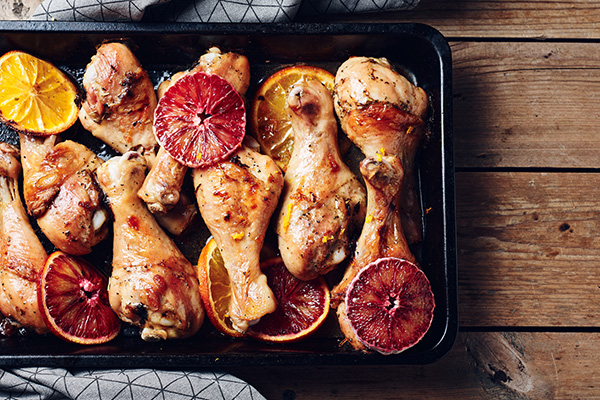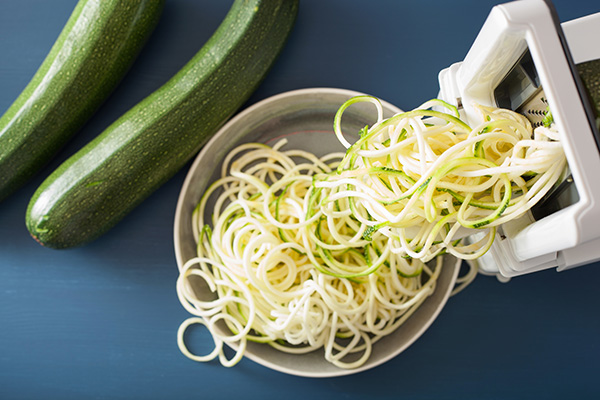6 Cooking Mistakes That May Cause Weight Gain

There are a lot of good reasons why cooking at home is ideal, but the most important reason is that you are in control.
You decide what ingredients and how much goes into your meals at home — something you can’t easily do when you eat out at a restaurant.
But there may be small mistakes you’re making when it comes to whipping up a homemade meal or snack that can lead to weight gain, from pouring on the olive oil to baking “low-fat” cookies.
Here are some cooking mistakes you may be making at home that you can correct.
1. You’re too generous with olive oil

No doubt olive oil is a healthy fat — it’s rich in monounsaturated fatty acids. In addition, the aroma of olive oil may even improve satiety, prompting you to eat less at later meals, according to a study.
But that doesn’t mean you can pour it on with abandon.
One tablespoon of olive oil contains 120 calories, and if you’re eyeballing how much you add to a pan, it’s easy to pour twice that — and therefore, twice the calories.
Jessica Swift, M.S., R.D. suggests using just enough oil to coat the pan’s cooking surface, then using a paper towel to wipe off any excess oil before adding other ingredients.
In addition, try sautéing veggies in low-sodium chicken or veggie stock or white wine.
2. You forget to spice things up
Rethink how you add flavor to foods. Instead of covering steamed broccoli in butter, sauces, or cheese, reach for your spice rack.
A study from the University of Colorado found that when people added herbs and spices to reduced-fat foods, they rated those foods as tasty as their full-fat versions.
Swift likes rubbing fish with dill, paprika, and garlic and topping it with a squeeze of lemon.
Also try covering chicken breasts with rosemary, garlic, lemon or orange slices, and sage before cooking.
3. You bake meat without a rack

Baking chicken in the oven can definitely help save calories over pan-frying or sautéing, but here’s what you’re probably missing: You should elevate the meat and cook it on a rack.
This allows the fat to drain away, Swift says. Do the same with veggies. Toss them with oil, salt, and pepper, then roast on a rack placed atop a baking sheet.
When done, they won’t be swimming in gobs of oil, but you’ll still enjoy the same delicious flavor.
4. You’re “cleaning up” baked goods

You know all the tricks to “health-ify” treats like cookies, muffins, and brownies.
You use puréed fruit instead of sugar. Add avocado to your brownies for a hit of healthy fats. Swap in whole-grain flour in your muffins.
But if you chow down on four of your healthier brownies because your new recipe contains half the fat — that defeats the entire purpose of a healthy snack.
And while it’s a good idea to make an effort to add as much nutrition as possible to treats, it can make it easier to justify a splurge.
In fact, people tend to eat larger portions of food if it’s marked “healthy,” according to research in the International Journal of Obesity.
5. You’re, well, cooking everything
Because research shows that adults are eating far too few fruits and vegetables, it’s a good idea to try to get more into your diet, whether steamed, roasted, or grilled — whatever way you love them the most.
But don’t forget to eat them raw, too.
According to a 2011 study published in the journal PNAS, the process of cooking produce makes more calories available to the body.
That means your body burns more calories by simply digesting raw foods, which could translate into weight loss.
(Sure, it’s a minimal amount, but over time this can add up.)
So don’t forget to include big salads; crudités, like sliced cukes and red peppers, dipped in salsa or guac; or gazpacho in your meal rotation.
6. You stick to flour-based noodles

If you’ve already switched from white pasta to whole-wheat versions, then give yourself a pat on the back.
Pasta made with 100% whole-wheat flour digests slower than other types, so you stay fuller for longer.
But there’s life beyond wheat noodles, and it saves mega-calories and dials up the nutrition: veggies masquerading as noodles.
Think spaghetti squash, zucchini and squash ribbons, and sliced asparagus.
Want proof?
One cup of spaghetti squash contains 42 calories compared with one cup of pasta at 200 calories.
Top veggie “noodles” with a tomato sauce and turkey meatballs and you’ve got a lower-carb and lower-calorie (but still satisfying) meal.
Pro tip: When making spaghetti squash, don’t salt it before cooking, which can add to your daily value of sodium.
The sauce you put on top will contain enough salt to flavor the dish.
